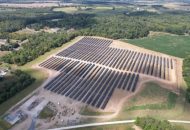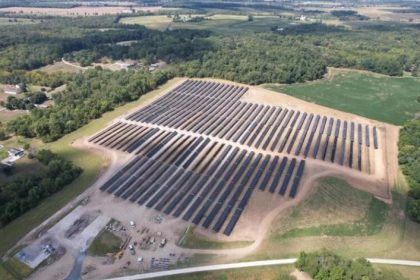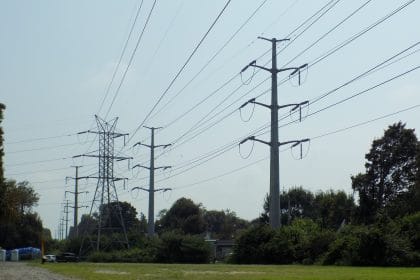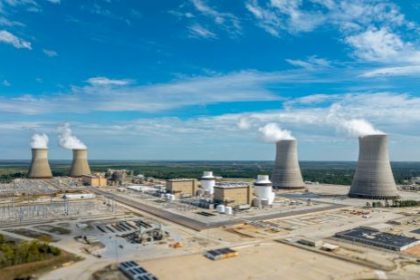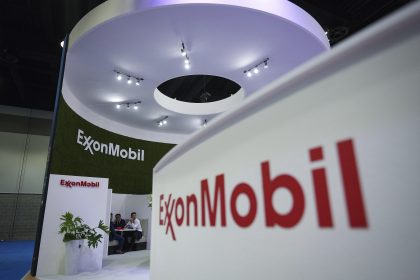IRA Expected to Be ‘Transformative’ for Hydropower Sector
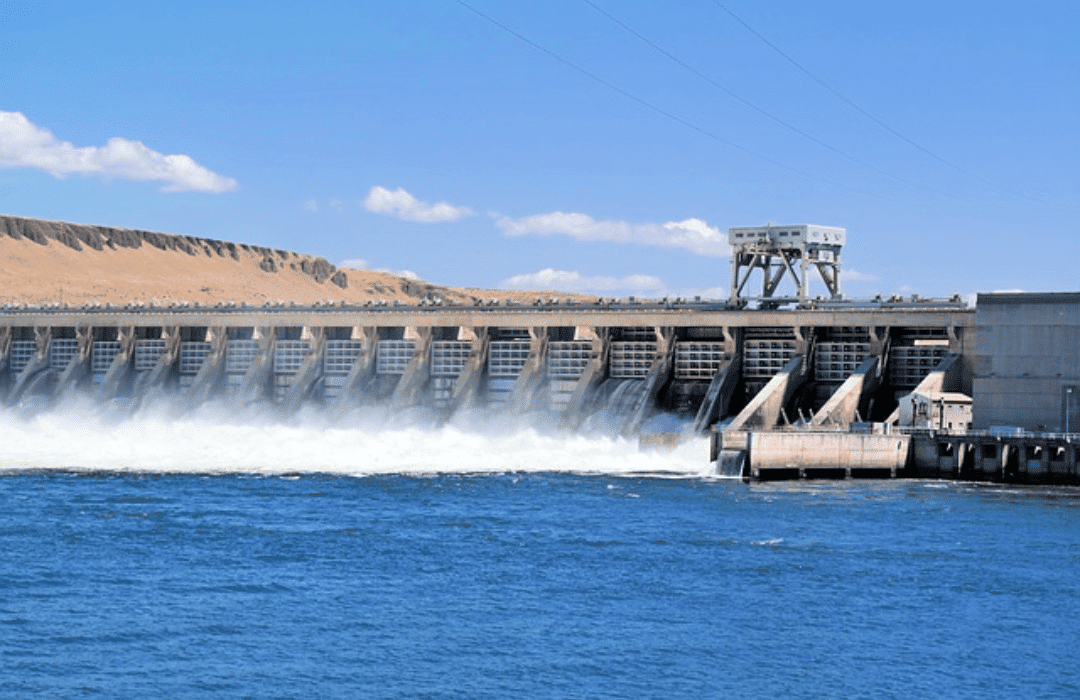
WASHINGTON — The Inflation Reduction Act signed into law by President Joe Biden last week is expected to have a transformative effect on the nation’s hydropower industry, dramatically accelerating the development of new pumped storage hydropower projects and hydropower generation on existing dams.
In fact, the $369 billion package of tax credits for the nation’s energy sector includes several provisions that have been long-standing priorities of the National Hydropower Association.
“Hydropower development is capital intensive. And for over a decade, our industry has been advocating for long-term extension of renewable tax credits at a rate that puts us on par with wind and solar,” said Malcolm Woolf, CEO of the association, in a written statement.
“This law rightfully provides hydropower with tax parity, and, by moving to a technology-neutral approach, ensures that it is never left behind again,” he said.
Among other things, the Inflation Reduction Act provides investment certainty for capacity upgrades at existing hydropower facilities, retrofits of non-powered dams with hydropower generation, and new marine energy and hydrokinetic generation by creating a 10-year investment tax credit and production tax credit framework for these projects.
The act also incentivizes the development of new pumped storage facilities through the creation of a 10-year technology-neutral energy storage investment tax credit.
In addition, it maximizes the benefits of the aforementioned tax provisions through direct pay for non-taxed entities, like co-ops and public power, and transferability for taxed entities, like investor-owned utilities.
“Flexible, carbon-free generation like reservoir hydropower and long-duration energy storage are essential to firm up our increased reliance on variable resources like wind and solar,” Woolf said.
“Hopefully, the new 30% investment tax credit for energy storage will jumpstart development of new pumped storage for the first time in a generation.”
When it comes to supporting new waterpower generation, the act extends the existing technology specific Section 45 parity tax credits for hydropower and marine energy projects through the end of 2024.
Under the tax credit that expired last year, capacity upgrades at existing hydropower facilities, retrofits of non-powered dams with hydropower generation, and new marine energy projects with a capacity of greater than 150kWs were eligible for a production tax credit that is half the PTC rate available for wind.
For all projects placed in service after Dec. 31, 2022, the IRA ends the half-credit for waterpower projects and places the value of the credit for waterpower projects on par with the PTC for wind.
The IRA also adds generation using pressurized conduits as an eligible technology under the PTC and reduces the 150 kW threshold for these, hydrokinetic, and marine energy projects to a 25 kW threshold. As was the case under expired credit, projects that are eligible for the Section 45 PTC may elect instead to claim the Section 48C investment tax credit.
This framework remains in place until the end of 2024 when the bill transitions to a tech-neutral framework.
Starting in 2025, the existing renewable energy tax credits transition to technology-neutral clean energy credits. Projects that meet the following criteria may elect to take either a PTC or an ITC, but not both.
For an electricity generation resource to qualify for a tax credit, the project must be:
- Used for the generation of electricity.
- Placed in service after Dec 31, 2024.
- One for which the anticipated greenhouse gas emissions rate is not greater than zero (as determined by the secretary of the Treasury).
This technology-neutral energy generation tax credit also applies to capacity upgrades and new units at existing non-greenhouse gas emitting electricity generation facilities placed in service after Dec. 31, 2024.
As hydropower, marine energy, and hydrokinetic projects are all non-greenhouse gas emitting forms of electricity generation, they should all be eligible for this new PTC or ITC.
Energy Storage Tax Credit
The Inflation Reduction Act also creates a new technology-neutral 10-year energy storage ITC through the end of 2032.
The energy storage ITC applies to new energy storage projects or capacity upgrades at existing energy storage projects with a capacity greater than 5 kilowatt hours (kWh). This tax credit lays the foundation for a much hoped for renaissance in pumped storage, the nation’s only long-duration energy storage technology.
The base rate for the production tax credits in the IRA is an inflation adjusted 0.3 cents per kWh of generation. Projects that comply with prevailing wage and apprenticeship requirements multiply the tax credit by 5.
Since the inflation-adjustment rate is calculated from 1990, the credit becomes 2.6 cents per kWh (in 2022) once the inflation-adjustment is factored in.
The base rate for the investment tax credits in the IRA is 6%. Projects that comply with prevailing wage and apprenticeship requirements multiply the tax credit by 5, which makes the total value 30%.
Wage and Apprenticeship Requirements
The IRA includes a new prevailing wage and apprenticeship framework. For projects to multiply their tax credit by 5, then they must comply with the following requirements:
Prevailing wage: Workers building and maintaining facilities must be paid the prevailing rates for the area in which the project is located. The prevailing wage for a given locality will be determined by the secretary of Labor.
Apprenticeship requirements: Starting in 2022, a set percentage of the labor hours constructing facilities must be completed by qualified apprentices. The percentage of labors hours completed by apprentices must be at least the following:
2022: 10%
2023: 12.5%
2024 onward: 15%
The secretary of Treasury will lay out rules at a later date for determining whether apprentices have completed the prerequisite percentage of labor hours and outlining the ratio journeymen to apprentices. Recognizing that there may not be apprentices available for a project, the IRA includes a good-faith exception for projects that request qualified apprentices from a registered apprenticeship program but do not receive a response in five business days, or for when no apprentices are available.
Bonus Credits
According to the National Hydropower Association, projects that use 100% American steel and iron, and meet the applicable manufactured goods requirements, will be eligible to multiply their credit by 10% if they are claiming the PTC or 10 percentage points if they are claiming the ITC.
Iron and Steel: The IRA specifies that iron and steel must be compliant with the Federal Transit Administration’s Buy America regulations. Those regulations require that all iron and steel used in a project must be manufactured in the United States.
The manufactured goods provision calls for a set percentage of manufactured components that go into a project to be mined, produced, or manufactured in the U.S. From 2022 to 2024, 40% of manufactured goods must be from the U.S. The percentage increases to 45% in 2025, 50% in 2026, and then tops out at 55% from 2027 onwards.
The association notes the domestic content bonus is different for projects taking the Investment Tax Credit and the Production Tax Credit.
A taxpayer that retrofits a non-powered dam that meets the prevailing wage and apprenticeship requirements, and that satisfies the domestic content provision, and that elects to take the ITC will be eligible for a 40% ITC (a 10 percentage point bonus on a 30% ITC).
A taxpayer that retrofits a non-powered dam that meets the prevailing wage and apprenticeship requirements, that satisfies the domestic content provision, and that elects to take the PTC, will receive an inflation adjusted 2.86 cents per-kWh PTC (a 10% bonus on 2.6 cents per-kWh credit).
Energy Community Bonus Credit
Projects located in “energy communities” are eligible for a bonus tax credit as well.
Energy communities are defined as any of the following:
1) A brownfield site.
2) An area which has (or, at any time after Dec. 31, 1999, had) significant employment related to oil, gas, or coal activities.
3) A census tract or any adjoining tract in which a coal mine closed after Dec. 31, 1999.
4) A census tract or any adjoining tract in which a coal-fired electric power plant was retired after Dec. 31, 2009.
The energy community bonus is different for projects taking the Investment Tax Credit and the Production Tax Credit.
For projects electing to take the ITC, the bonus is 10 percentage points. For example, an ITC project that complies with prevailing wage and apprenticeship provisions, and is located in an energy community, would receive a 40% ITC.
An ITC project that does not comply with prevailing wage and apprenticeship provisions, but is located in an energy community, would receive a 16% ITC.
For projects taking the PTC, the bonus is 10% of the value of the PTC. For example, a PTC project that complies with prevailing wage and apprenticeship provisions, and is located in an energy community, would receive an inflation adjusted 2.86 cents per-kWh PTC (a 10% bonus on 2.6 cents per-kWh credit).
The IRA revives the Section 48C qualified advanced energy property credit, and it allows the secretary to allocate an additional $10 billion in tax credits to qualifying projects, starting in 2023. In addition, it amends the language to specifically list “water” as a covered resource under the program. The credit will help U.S. hydropower equipment manufacturers by supporting investments to establish, expand, or re-equip their own production facilities.
“This bill recognizes that new hydropower generation is essential to a reliable, clean energy grid,” Woolf said. “However, we are disappointed that the existing hydropower fleet, which currently serves an estimated 30 million Americans, may have been overlooked.
“The provisions to encourage environmental improvements at the existing hydropower fleet, championed by Sen. Maria Cantwell, D- Wash., and Lisa Murkowski, R-Alaska, in S.2306, were not included in the bill that reached the president’s desk.
“We look forward to working with Congress to preserve our nation’s fleet as we cannot address climate and ensure a reliable grid without the nation’s second largest renewable electricity resource,” Woolf said.
Dan can be reached at [email protected] and at https://twitter.com/DanMcCue.











